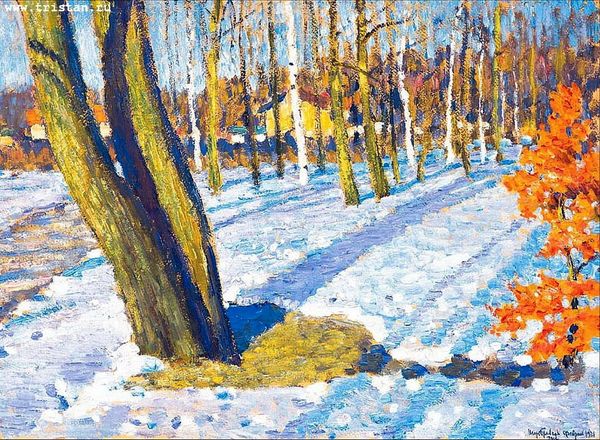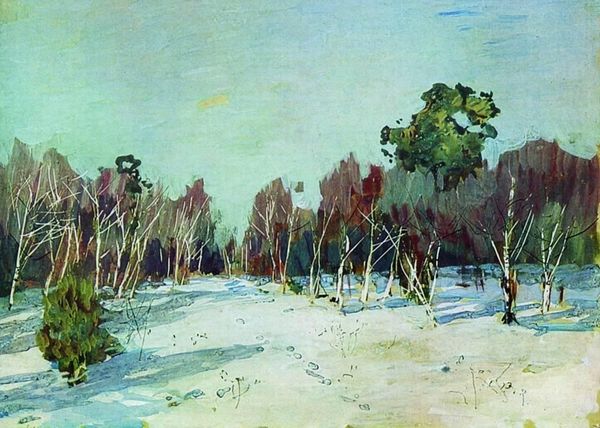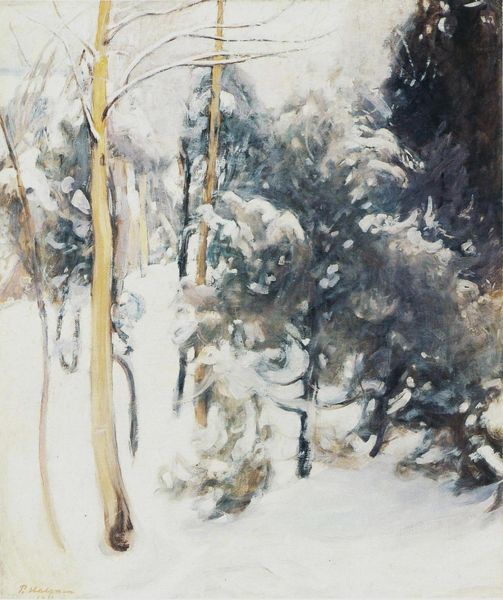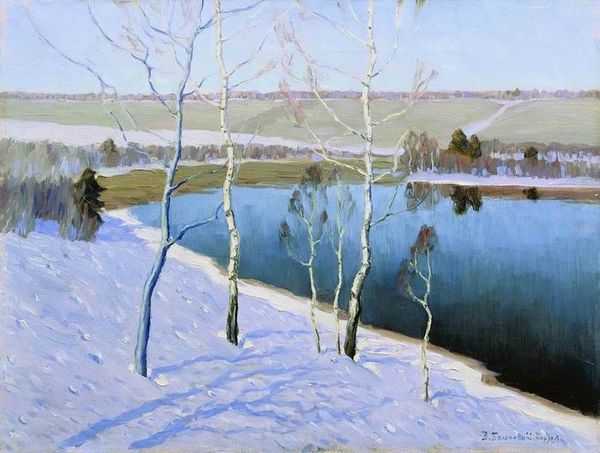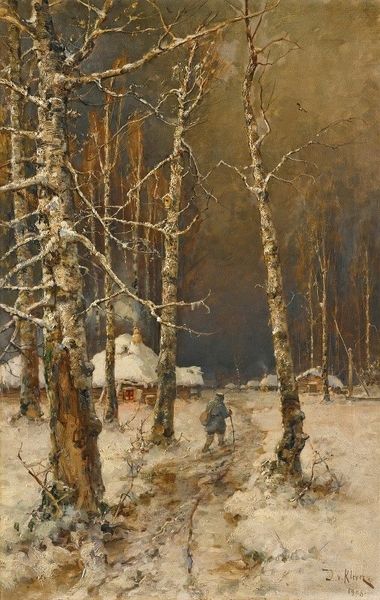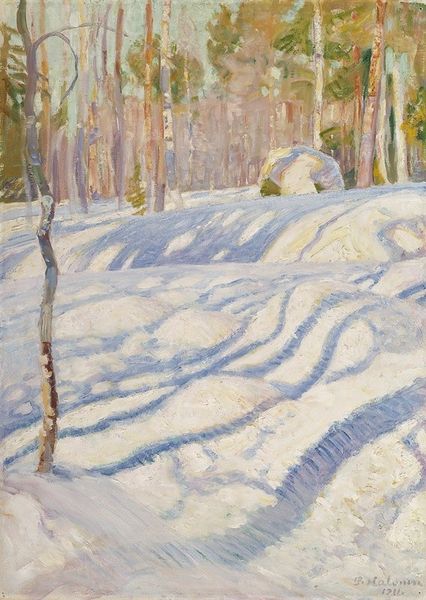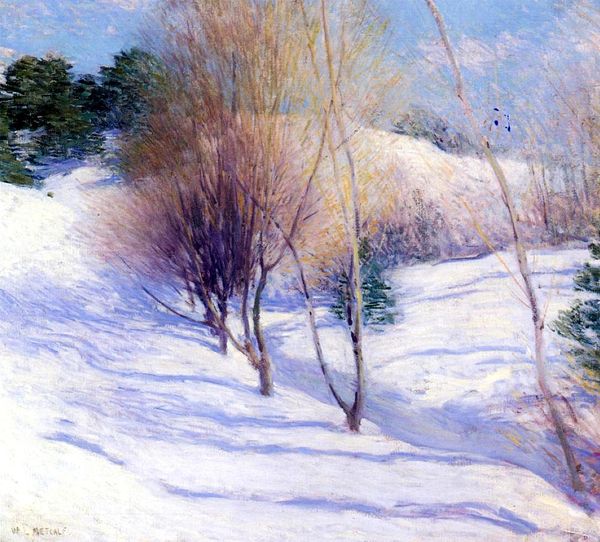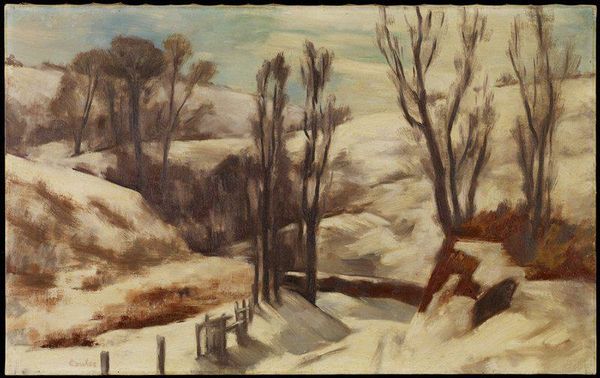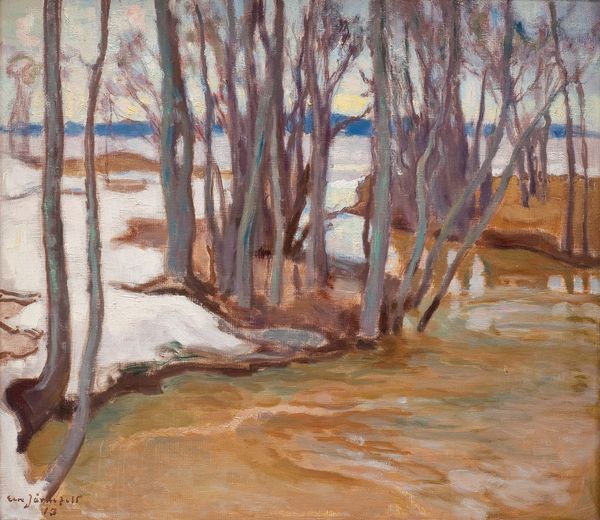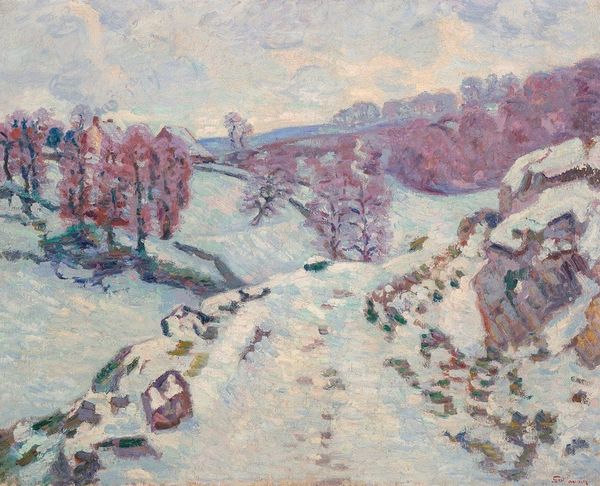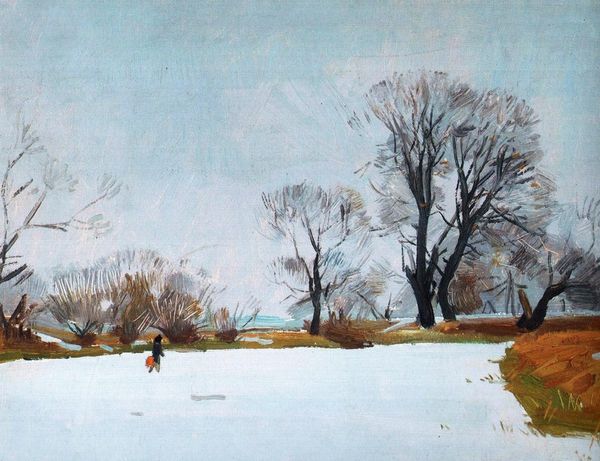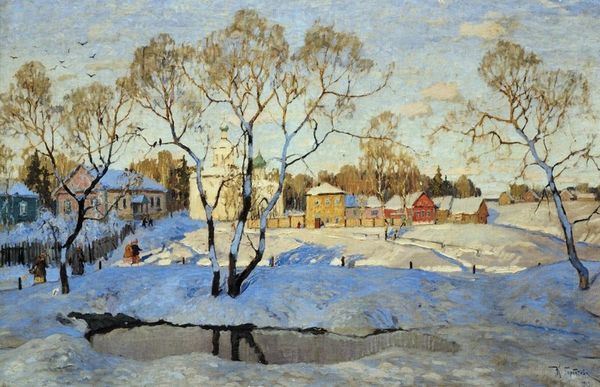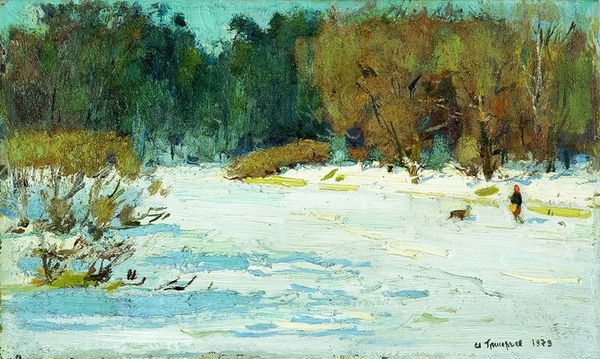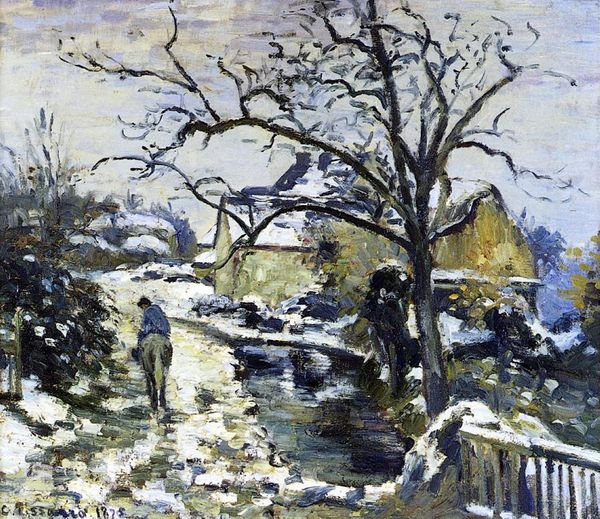
Copyright: Public domain
Editor: Here we have Isaac Levitan's "Early March," created in 1900, using oil paints, probably with an impasto technique given the textures. I find the painting quite peaceful, maybe even a little melancholy. The snow is melting, the trees are bare...What catches your eye most in this scene? Curator: I’m drawn to how the snow is not just white, but reflects the blue of the sky. The symbol of melting snow in this context could mean multiple things. On one hand, it can indicate hope and a slow awakening after a harsh period. But what are your thoughts on that reddish hue visible beneath the surface of the trees, along the edge of the frame? Editor: It seems to suggest a subtle vibrancy, maybe the first blush of spring returning to the landscape? The logs used for the barn feel kind of sturdy. Do you think this imagery conveys specific symbolism within Russian culture? Curator: Yes, certainly. This painting encapsulates a particular feeling—a turning point between seasons but also reflecting the transition of an old cultural view facing down something modern, such as industry. Does that shed light on your initial interpretation of melancholy? Editor: I hadn't thought about it in terms of cultural shifts. That tension between the old and the new definitely adds another layer. It feels like Levitan captured more than just a landscape; he captured a moment in time, a cultural turning point. Curator: Precisely! The visual symbols work on multiple levels, echoing in our individual consciousness as much as in a shared cultural memory. I feel that it could equally signify death, as it might hope, don’t you agree? Editor: Absolutely! It makes me think about how artists use familiar imagery to express these complex and overlapping feelings, how visual symbols really speak volumes.
Comments
No comments
Be the first to comment and join the conversation on the ultimate creative platform.
